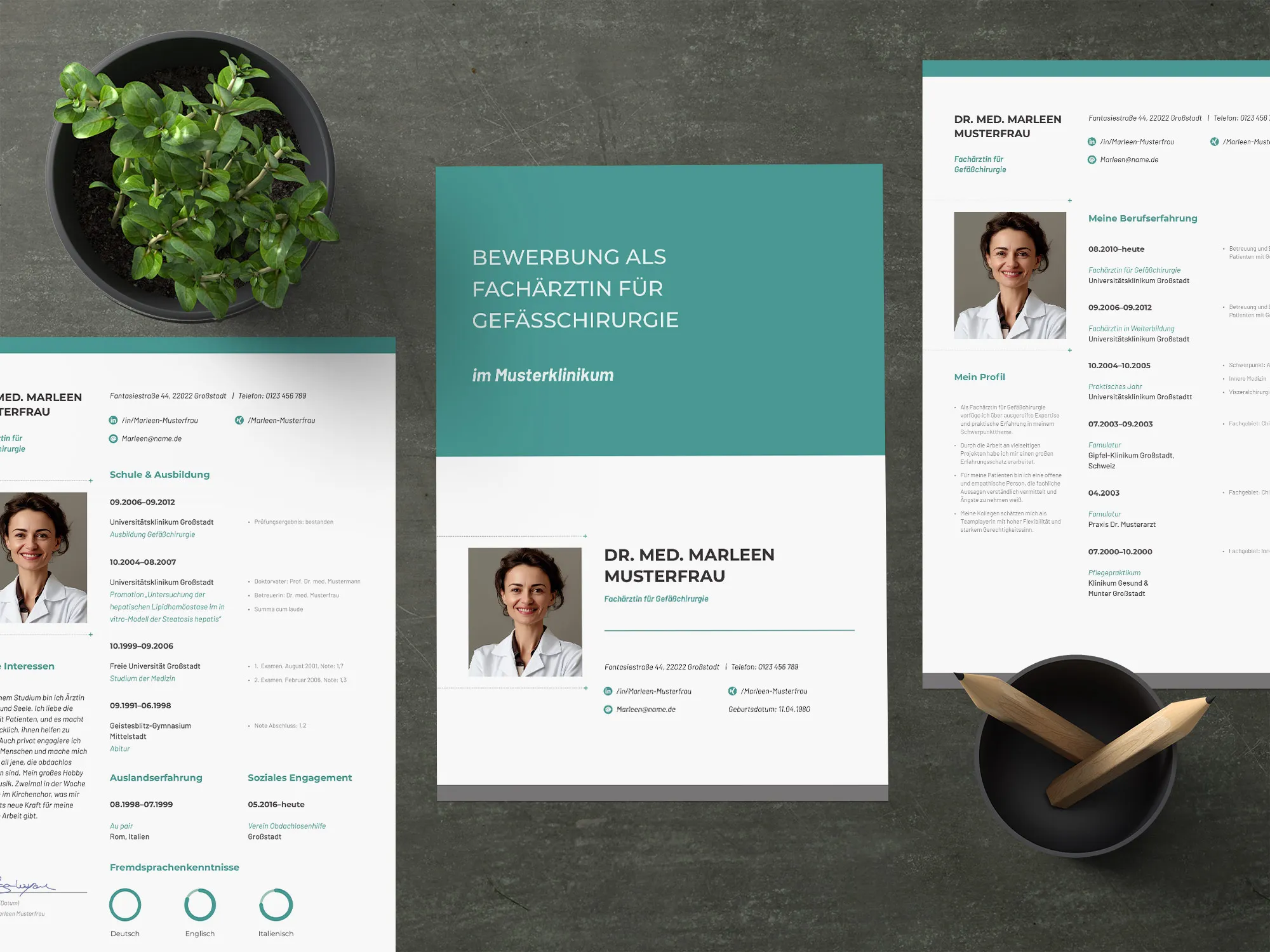Plasterer: Template for a job application with resume
Do you have a knack for artistic spatial design and are looking for tips on how to showcase your application as a plasterer? Whether you are just starting out or already have experience – here you will find everything you need for your successful application, including valuable hints for your resume and formulation aids for your cover letter and application. Be inspired by our useful tips and templates, paving the way for your dream career as a plasterer. We accompany you step by step on your path to a creative and successful professional life.
Do you want to become a plasterer? This sample text will help you craft your cover letter
Feel free to be inspired by our sample cover letter for the application as a plasterer. This template supports you with suitable formulations to design your cover letter. It is important to refer to the requirements of the company's job description. Link your previous skills and experiences with the required knowledge and qualities from the job advertisement. This way, the recruiter quickly sees that you are not only professionally qualified but also have a genuine interest in the advertised position. By following these tips, you will surely soon be invited to an interview.
Dear [Name of the contact person],
I have always been fascinated by how a skilled plasterer can transform rooms into true works of art through creative techniques and craftsmanship. My interest in this traditional craftsmanship runs deep and has motivated me to pursue this career path.
During my training, I had the opportunity to participate in various projects, from the restoration of historical buildings to the design of modern interiors. In doing so, I was able to contribute both my technical skills and creativity. I am particularly proud of a project where I was able to faithfully reconstruct the ceiling of an Art Nouveau building.
I am convinced that your renowned company is the ideal place to further develop my skills and contribute to the beautification of structures. Your high standards of quality and attention to detail precisely match my way of working. It would be an honor for me to become part of your team and realize impressive projects together.
I am available for a personal conversation to discuss possible areas of deployment and my motivation. I would be very pleased to receive an invitation.
Yours sincerely
[Your Name]
Do you like the sample? Feel free to use it as a template for your application as a plasterer and customize it. Don't forget to add your personal information and the full recipient's address, as well as the date. If you know a contact person, it is always better to address them directly, for example: Dear Mr. Müller.

Customizing the text template: Individualize your cover letter for the application with these tips
You should definitely adapt the template to your personal and professional circumstances. You can highlight your previous experiences and make it clear why you are the right person for the advertised position. An individually tailored cover letter is usually more convincing than a generic one.
- Plastering walls and ceilings: you apply plaster, lime, or cement mortar cleanly to walls and ceilings.
- Facade renovation: you renew and design exterior facades of buildings to make them visually appealing and functional.
- Plastering work: you design and repair artistic plaster decorations on interior and exterior walls.
- Dry construction: you construct partition walls and ceiling linings from plasterboard.
- Restoration work: you restore historical buildings and artworks through professional restoration methods.
- Insulation: you install insulation systems to improve the energy efficiency of buildings.
- Customer consultation: you discuss customers' wishes and provide them with professional recommendations for implementing their projects.
Remember that a personalized cover letter and emphasizing key tasks from your scope of work as a plasterer can significantly increase your chances of a successful application. Use the above tips to present your skills and experiences in a targeted manner.

Which industries are in need of a qualified plasterer?
As a plasterer, you have various opportunities to work in different industries. Your craftsmanship is in demand in both traditional and modern construction methods, and you can make valuable contributions in various areas.
- Residential construction: You can design new apartments and houses and give them a unique appearance through your plastering work.
- Historic building renovation: Your skills are especially sought after in renovations and restorations of historical buildings to preserve their old charm and restore them authentically.
- Industrial construction: You can also contribute to combining functionality and aesthetics in industrial architecture, especially in representative buildings or office complexes.
- Interior design: From design work on ceilings and walls to decorative elements like plaster decorations, you can be creatively involved in interior design.
- Monument preservation: Your specialized knowledge is sought after in the restoration and conservation of historical monuments to maintain the value and history of these objects.
In summary, as a plasterer, you can work in various industries. Whether in residential construction, historic building renovation, industrial construction, interior design, or monument preservation – your competencies are diverse and offer you numerous opportunities to practice your craft and contribute.

Show your competencies in a clear and structured resume in the application
When applying as a plasterer, a well-structured resume is crucial to convince potential employers of your skills and suitability for this craft profession. Your resume should be clear and informative to clearly demonstrate your qualifications.
- Professional qualifications: Specify the formal training and further education you have completed that are relevant to the plasterer profession.
- Practical experience: Describe your previous jobs and the specific tasks you have taken on as a plasterer there. Experience in drywall construction, plastering, and stucco work is particularly relevant.
- Handyman skills: List specific handyman skills such as plastering, modeling, and restoring building parts. Also mention your handling of various materials and tools.
- Further training and certificates: If you have attended additional courses or workshops that enhance your skills, you should also list these. This can demonstrate your versatility and commitment.
- Soft skills: Also mention qualities such as precision, reliability, and teamwork, as these are highly valued in the craft sector.
A meticulously and conscientiously designed resume shows potential employers that you not only have the necessary skills and experience but also work in a motivated and detail-oriented manner. With the right information and a clear structure, you can significantly increase your chances of a successful application.
Prepare your application for plasterer and convince with professional design – use our customizable resume templates for Word, InDesign, and more:
